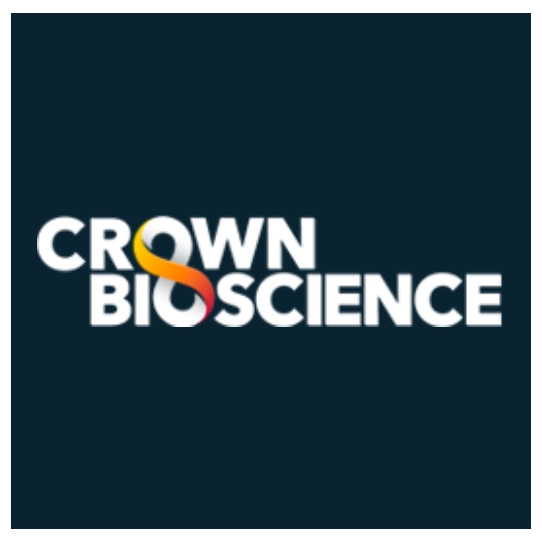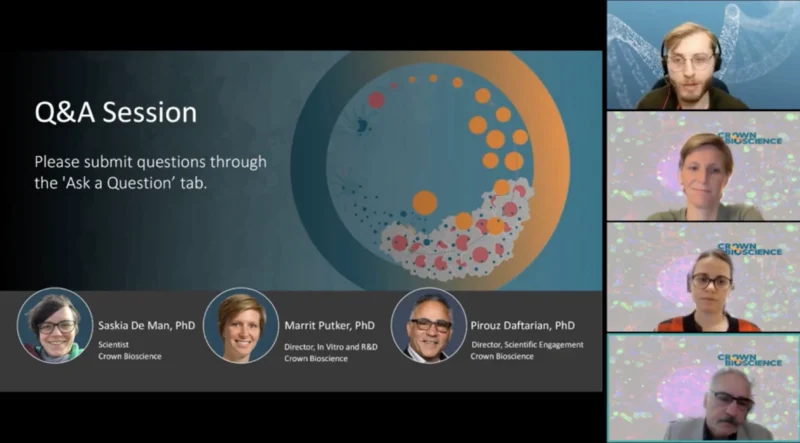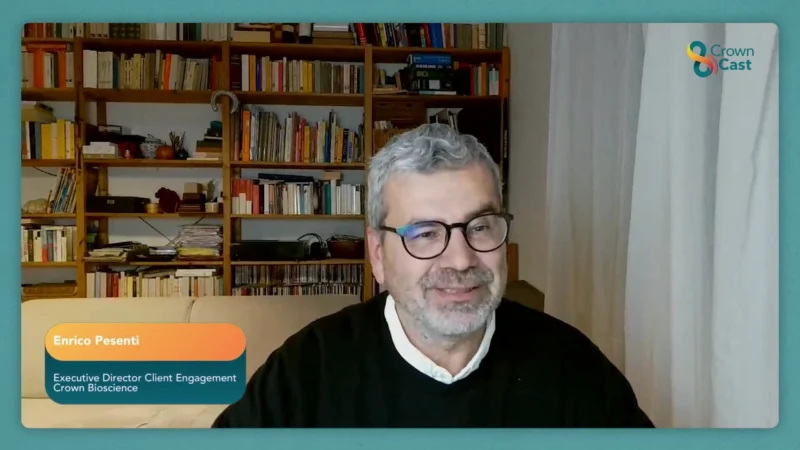Analyzing the Suppressive TME in In Vitro Based Assays
In the rapidly advancing field of cancer immunotherapy, accurately modeling the tumor microenvironment (TME) has become essential to improving the predictive power of preclinical drug testing. As immune-modulating therapies surge forward, with over 4,000 immune modulators in development globally, scientists are refining assay technologies that maintain the complexity of patient-specific tumor biology. In vitro platforms that preserve native architecture or simulate the suppressive immune context hold the potential to drastically shorten drug development timelines and reduce costly clinical failures.
How can we best mimic the suppressive TME in a dish to evaluate the real-world effectiveness of cancer therapeutics?
In this episode of Crown BioScience, host Liam Sanio is joined by Dr. Nataliia Beztsinna, Head of the 3D Ex Vivo Patient Tissue Platform, and Dr. Marten Hornsveld, Senior Scientist in Oncology. Together, they explore native and engineered assay systems that sustain the full cellular landscape of tumors—enabling deeper understanding of immune evasion, therapeutic responses, and drug resistance mechanisms.
Key discussion highlights:
-
Dr. Beztsinna shares how CrownBio’s ex vivo patient tissue platform maintains tumor clusters and immune-stromal interactions for high-throughput screening.
-
Dr. Hornsveld demonstrates how reconstituted co-cultures using cancer organoids, fibroblasts, and myeloid cells help model tumor-supportive contexts and immune suppression.
-
The team outlines assay strategies for studying T-cell exhaustion, macrophage polarization, and fibroblast-induced drug resistance in 3D settings.
Dr. Nataliia Beztsinna leads CrownBio’s 3D ex vivo patient tissue platform in Leiden. With a PhD in nanomedicine and a background in advanced tumor modeling, she specializes in developing translational in vitro assays for oncology drug discovery.
Dr. Marten Hornsveld is a Senior Scientist in Oncology at CrownBio. With a PhD in molecular cell biology, he focuses on leveraging 3D multicellular systems and imaging-based phenotyping to enhance immuno-oncology research.




